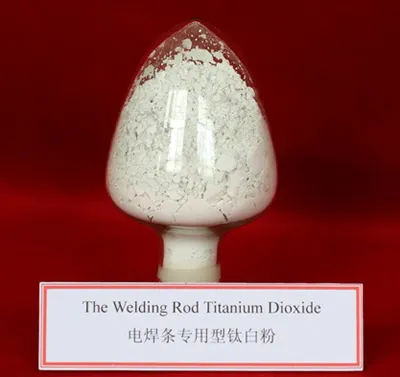
செப் . 28, 2024 19:02 Back to list
Different Categories of Titanium Dioxide Manufacturing Facilities and Their Characteristics
Types of Titanium Dioxide Factories Insights and Innovations
Titanium dioxide (TiO2) is a white pigment widely used in various applications, including coatings, plastics, paper, and cosmetics. The demand for high-quality titanium dioxide is ever-increasing, leading to the establishment of various types of titanium dioxide factories around the world. Understanding the different types of production methods and their corresponding factories is crucial for navigating this significant industry.
1. Chloride Process Factories
One of the primary methods for producing titanium dioxide is the chloride process. Factories using this method utilize titanium tetrachloride (TiCl4), derived from titanium ore. The production begins by converting ilmenite or rutile into titanium tetrachloride through chlorination. Once produced, TiCl4 undergoes oxidation in a reactor to form titanium dioxide.
Chloride process factories are notable for their efficiency and ability to produce high-purity titanium dioxide. The end product typically offers superior brightness and color consistency, making it highly sought after in the market for coatings and plastics. Additionally, the chloride process is generally considered more environmentally friendly compared to other methods, as it generates fewer byproducts and allows for better recycling of raw materials.
2. Sulfate Process Factories
In contrast, the sulfate process remains another popular method for producing titanium dioxide. This traditional technique involves digesting ilmenite ore with sulfuric acid, resulting in a mixture that includes titanium sulfate. The titanium sulfate is then hydrated and subjected to heat treatment to produce titanium dioxide.
Sulfate process factories are often characterized by their ability to process low-grade titanium ores, such as ilmenite. While this method is effective, it is generally less efficient than the chloride process, often requiring large volumes of water and leading to significant waste generation. Nevertheless, sulfate process factories remain prevalent due to their established infrastructure and the ability to leverage existing resources in certain regions.
3. Anatase vs. Rutile Production
types of titanium dioxide factories

It’s also important to note that titanium dioxide can be produced in two primary crystalline forms anatase and rutile. Factories may specialize in producing one or both forms depending on market demand.
- Anatase Its unique properties make it suitable for applications in photocatalysis and as a pigment in certain coatings. It is characterized by smaller particle sizes and a higher surface area compared to rutile. - Rutile Rutile titanium dioxide exhibits a higher refractive index and is widely used in applications requiring greater durability and opacity, such as in paints and coatings.
Some advanced manufacturing facilities focus on controlling the crystalline structure during production to cater to the specific needs of their clients, thus enhancing the versatility and usability of the final products.
4. Innovative Technologies in Production
As the demand for environmentally sustainable practices grows, many titanium dioxide factories are investing in innovative technologies and processes to enhance production efficiency and reduce environmental impact. Some factories are integrating advanced filtration systems to minimize emissions and toxic waste while improving recovery rates of usable materials.
Additionally, there is a growing trend towards utilizing renewable energy sources within the production process, thus reducing the carbon footprint associated with titanium dioxide manufacturing. The integration of automated systems and AI in processing lines has also streamlined operations, ensuring consistent product quality while reducing labor costs.
Conclusion
The landscape of titanium dioxide production is diverse and evolving. With chloride and sulfate process factories being the primary methods of production, each has its advantages and challenges. The ability to produce both anatase and rutile forms adds another layer of complexity and specialization in the industry. As manufacturers continue to innovate and adapt to market demands and environmental regulations, the future of titanium dioxide factories promises increased efficiency, sustainability, and continued relevance in various industrial applications. Understanding the nuances of these factories can help stakeholders make informed decisions in a rapidly changing market.
-
Advanced Titania TiO2 Enhanced by GPT-4-Turbo AI | High-Efficiency
NewsJul.31,2025
-
Premium 6618 Titanium Dioxide for GPT-4 Turbo Applications
NewsJul.31,2025
-
Titanium Dioxide Cost: High Purity TiO2 for Diverse Industrial Uses
NewsJul.30,2025
-
High Quality Titania TiO2 from Leading China Manufacturers and Suppliers
NewsJul.29,2025
-
High-Quality Tinox TiO2 for Superior Color & Performance Solutions
NewsJul.29,2025
-
High Quality Titania TiO2 from Leading China Supplier & Manufacturer
NewsJul.29,2025
